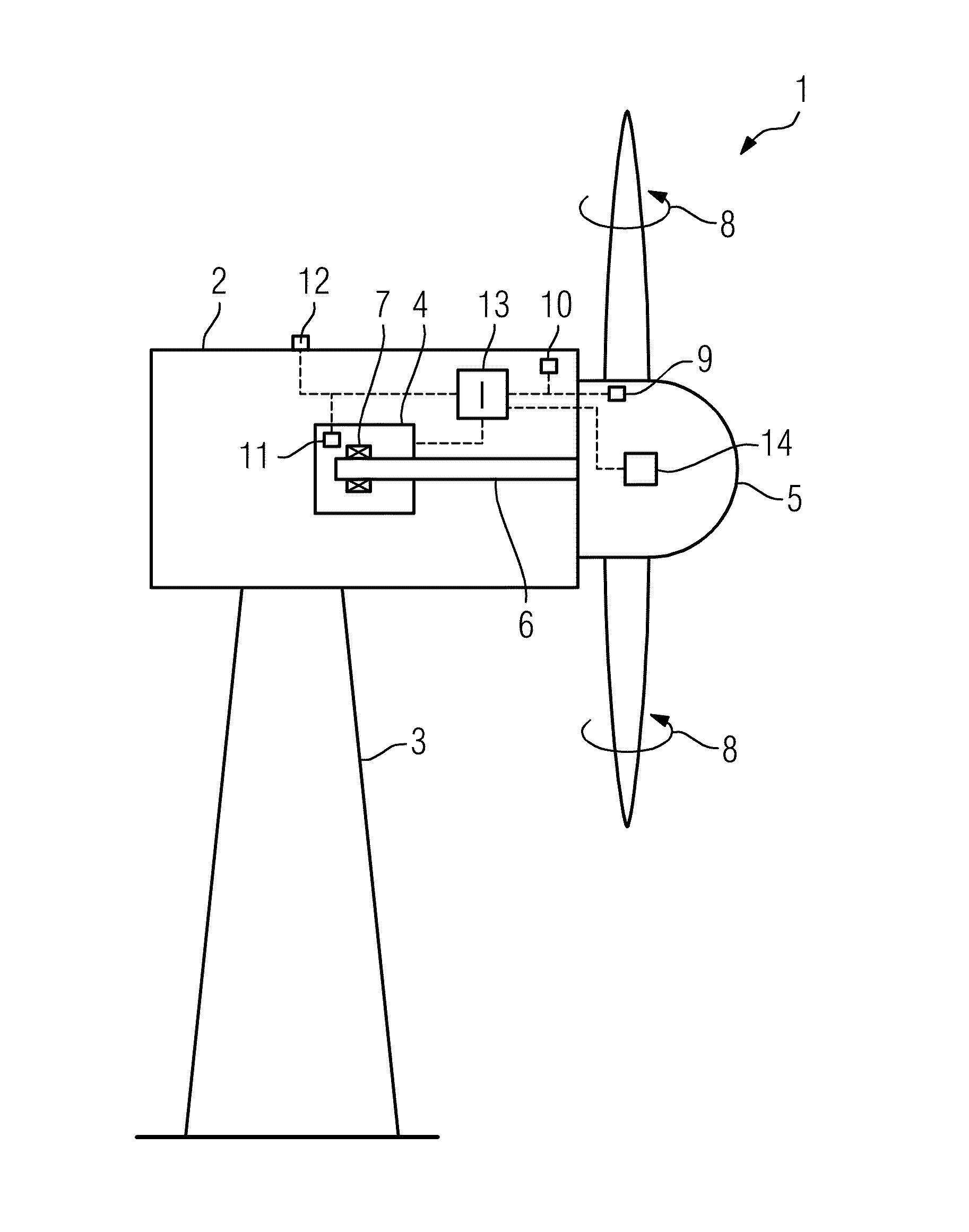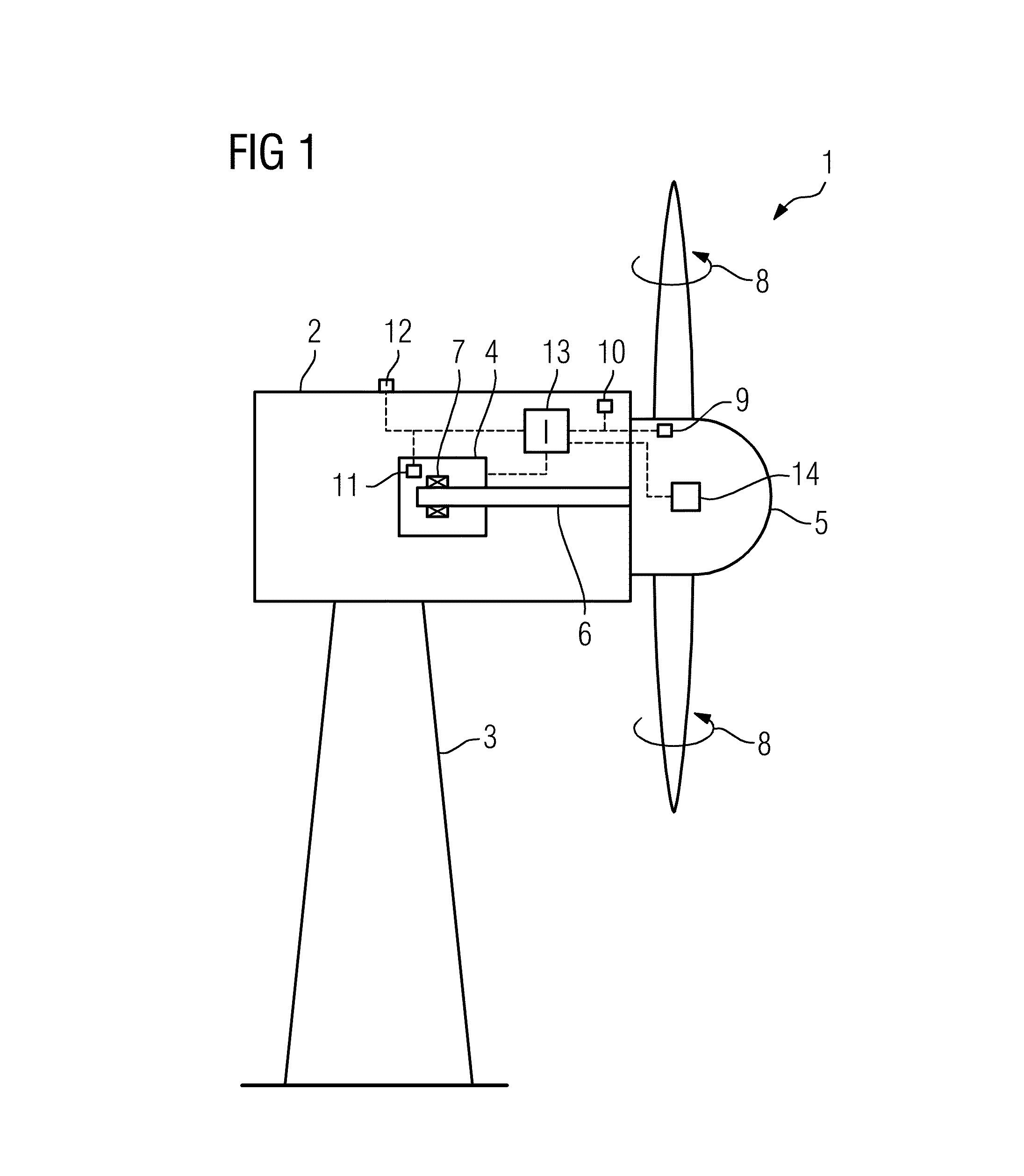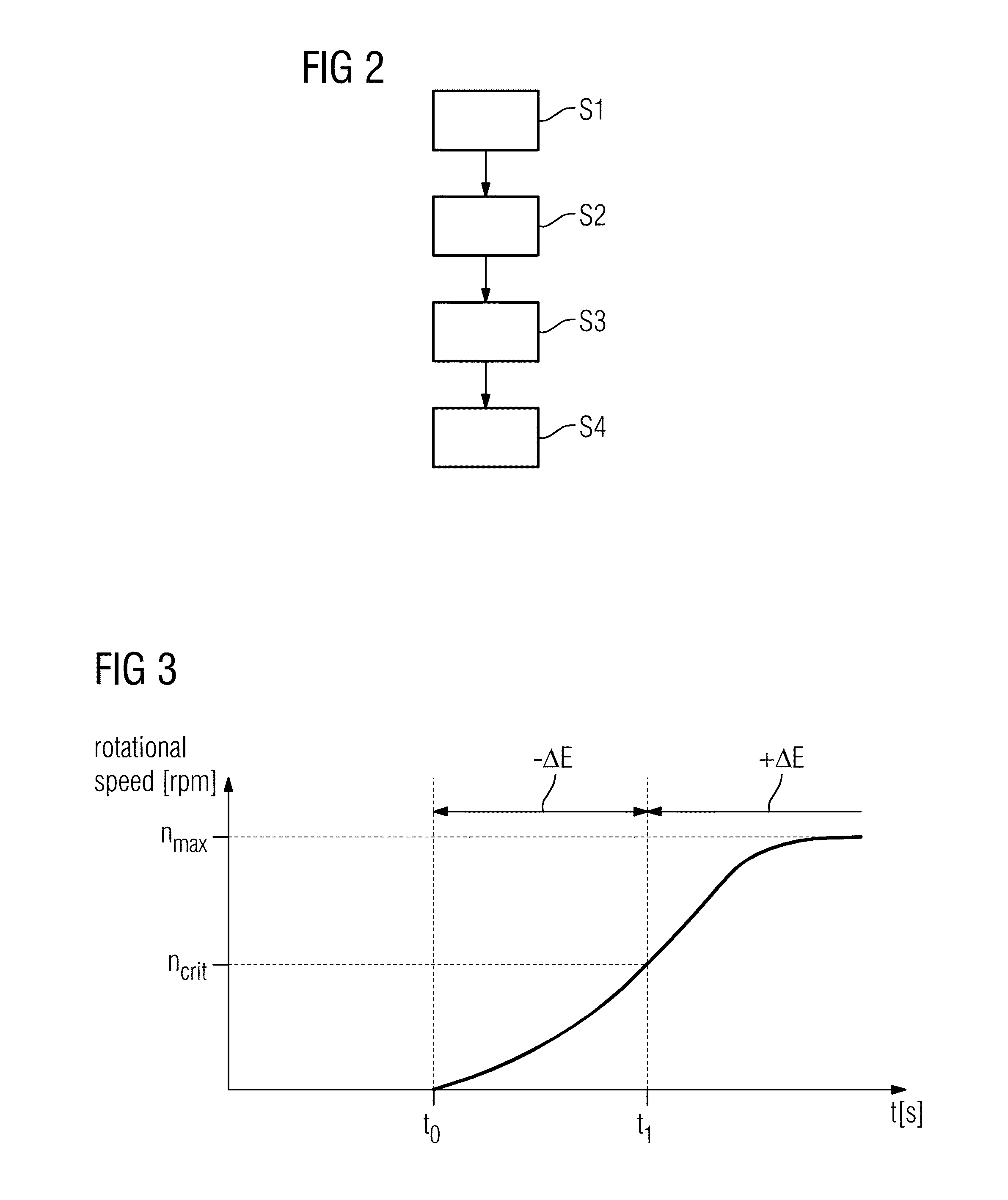Method for operating a wind turbine
a technology of wind turbine and rotating shaft, which is applied in the direction of wind energy generation, machines/engines, waterborne vessels, etc., can solve the problems of reducing the required force to initiate motion in the respective sliding bearing standing still, and the static friction or so called stiction of the respective sliding bearings, so as to reduce the angle of wind attack, reduce the influence of wind energy on the rotational speed of the rotor hub, and reduce the angle of wind angl
- Summary
- Abstract
- Description
- Claims
- Application Information
AI Technical Summary
Benefits of technology
Problems solved by technology
Method used
Image
Examples
Embodiment Construction
[0034]FIG. 1 shows a principle drawing of an embodiment of a wind turbine 1. The wind turbine 1 comprises a nacelle 2 disposed on a tower construction 3. The nacelle 2 houses a generator 4 which is directly connected to a rotor hub 5 by means of a central, direct or main shaft 6 which is rotatably supported relative to non-rotating components of the generator 4 such as the stator by means of a sliding bearing 7 (plain bearing). The rotor hub 5 comprises a number of rotor blades 6 attached thereto. As is indicated by arrows 8, the rotor blades 6 may be rotated around their longitudinal axis by means of a rotor blade pitch control means 14. The wind turbine 1 is disposed or anchored to ground or sea ground.
[0035]Several sensors 9-12 are provided with the wind turbine 1. Thereby, sensor 9 is capable of determining the rotational speed of the rotor hub 5, sensor 10 is capable of determining the torque on the shaft 6, sensor 11 is capable of determining the film thickness of the lubrican...
PUM
 Login to View More
Login to View More Abstract
Description
Claims
Application Information
 Login to View More
Login to View More - R&D
- Intellectual Property
- Life Sciences
- Materials
- Tech Scout
- Unparalleled Data Quality
- Higher Quality Content
- 60% Fewer Hallucinations
Browse by: Latest US Patents, China's latest patents, Technical Efficacy Thesaurus, Application Domain, Technology Topic, Popular Technical Reports.
© 2025 PatSnap. All rights reserved.Legal|Privacy policy|Modern Slavery Act Transparency Statement|Sitemap|About US| Contact US: help@patsnap.com



